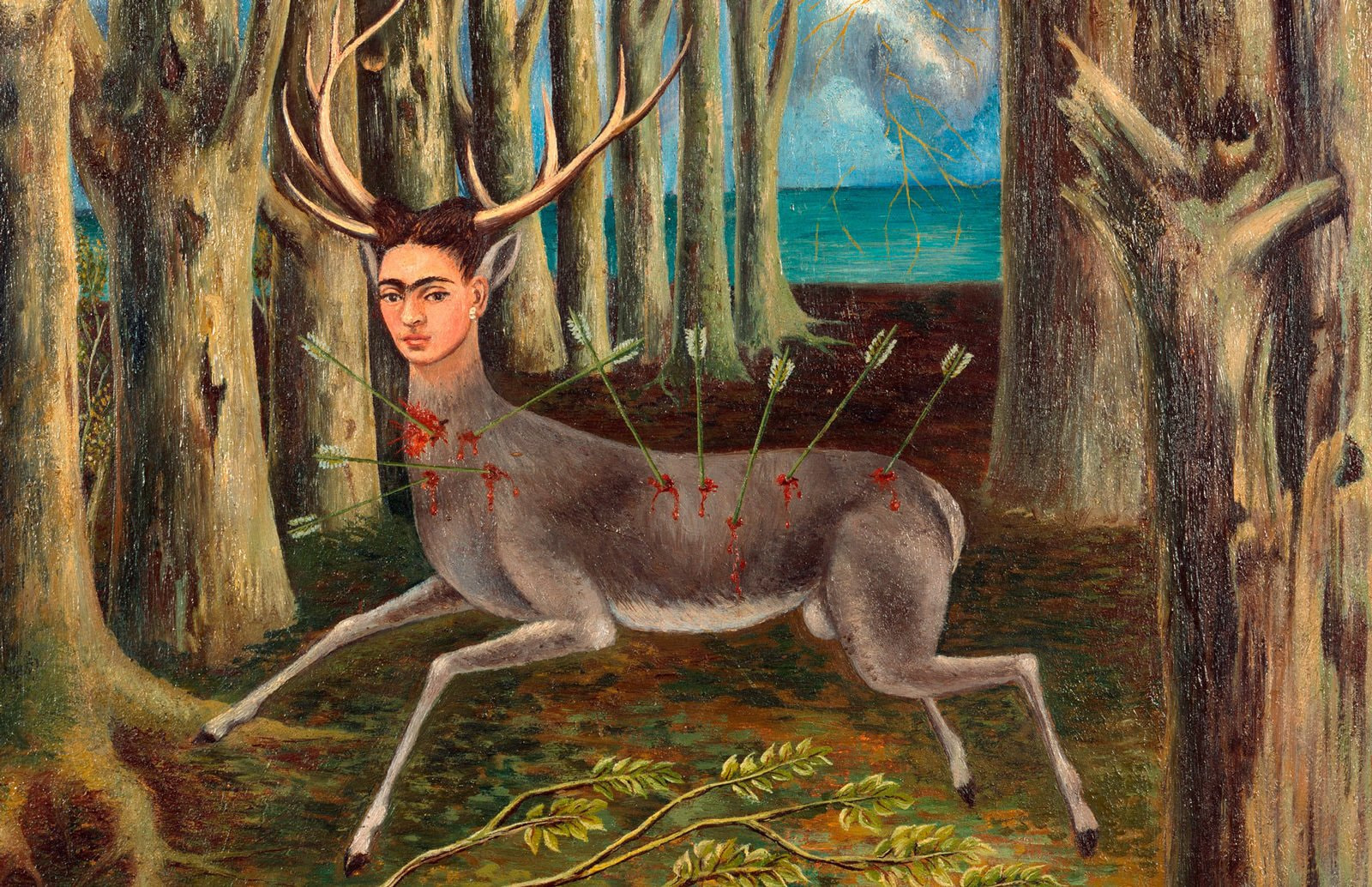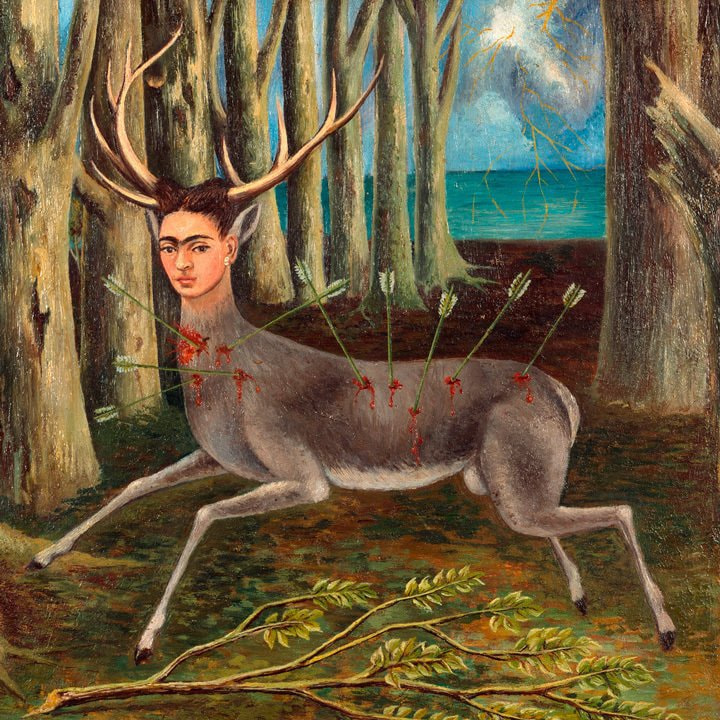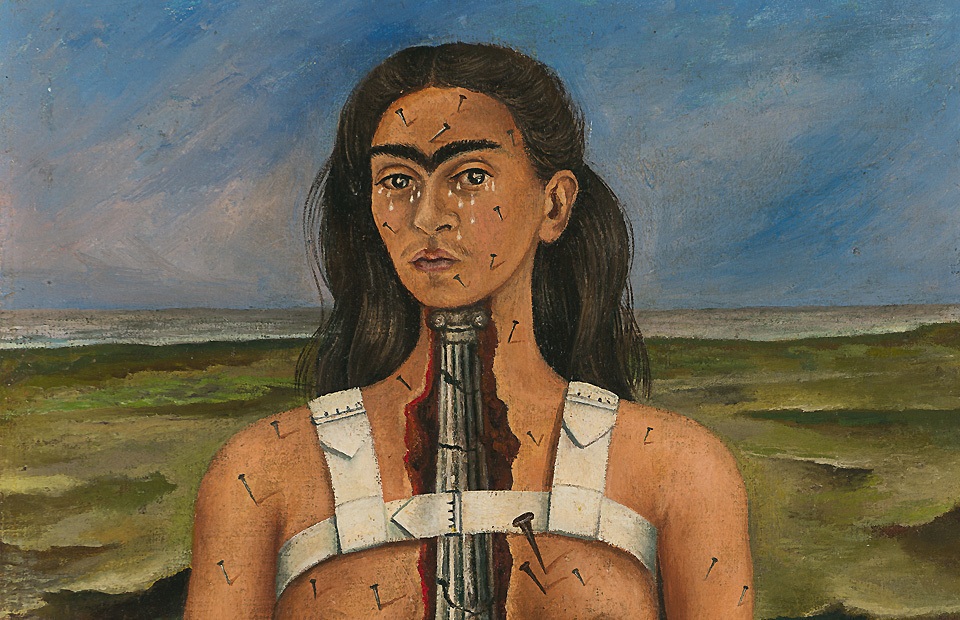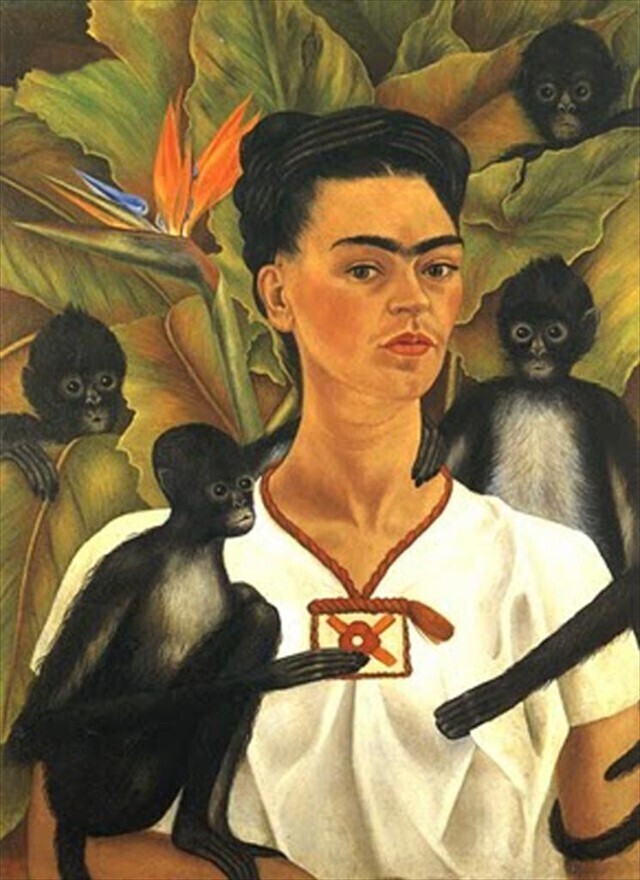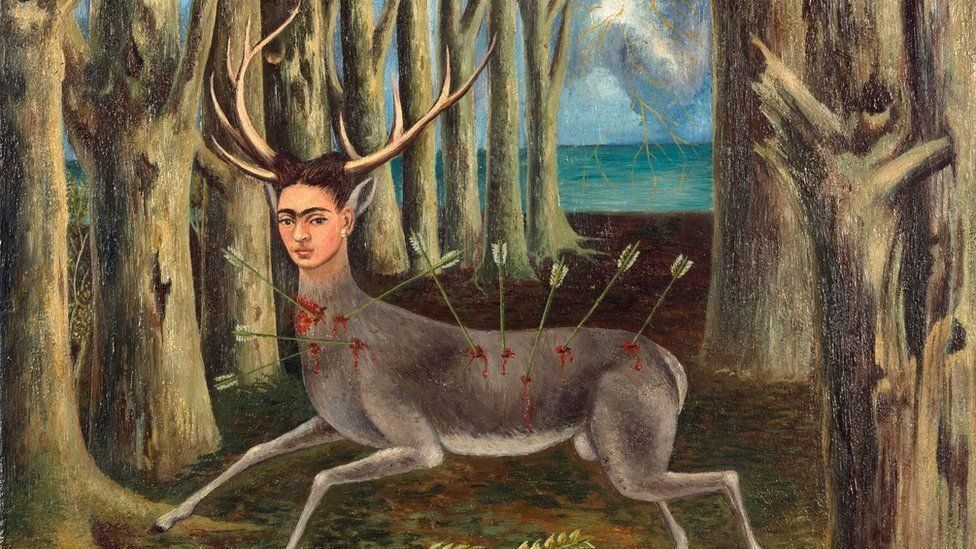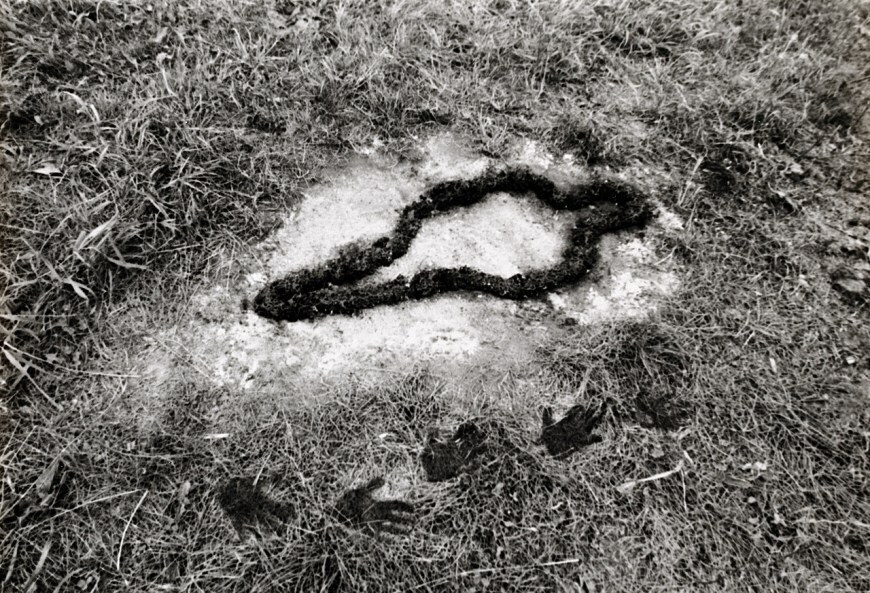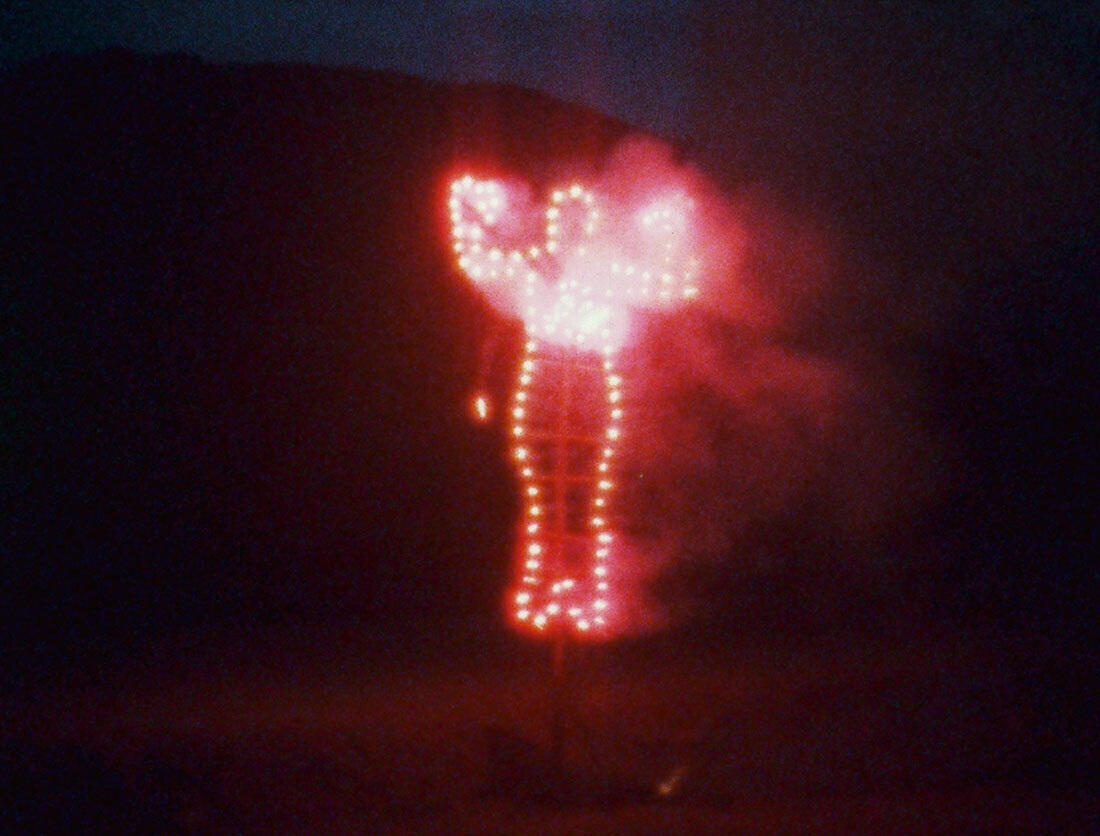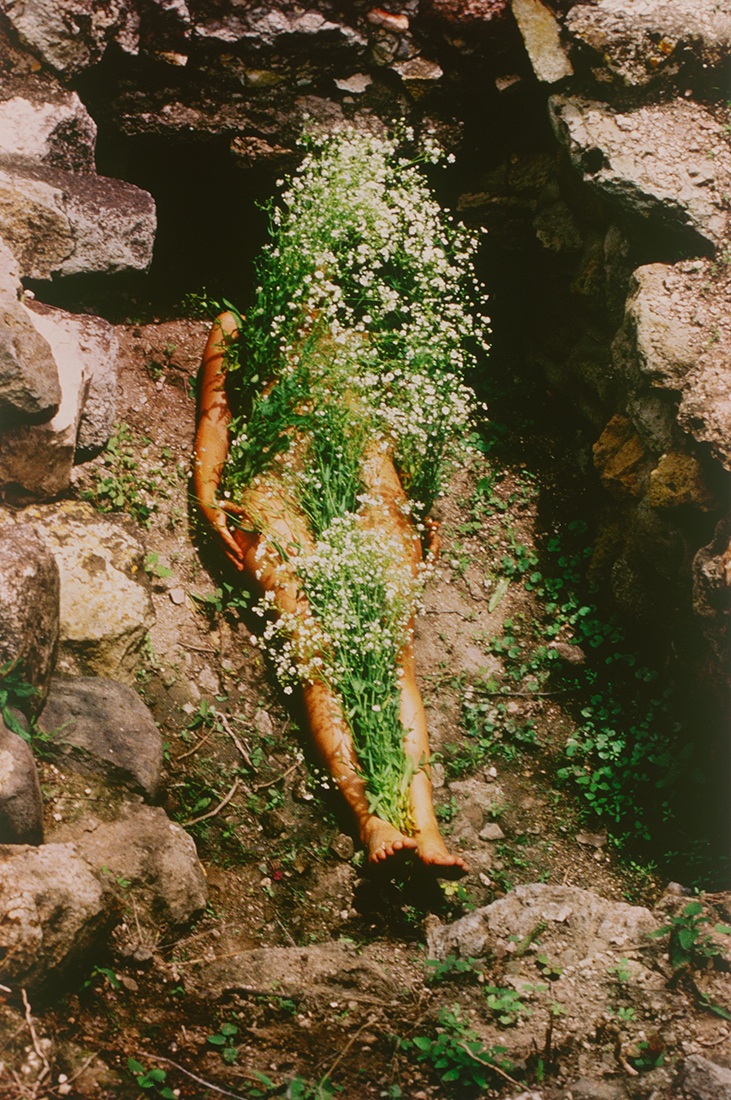In her next lecture Irina Kulik will pair up two brilliant yet tragic figures in the history of twentieth century art—Frida Kahlo and Ana Mendieta.
Mexican artist Frida Kahlo (1907–1954) whose practice was informed by autobiographical events and national folklore, remained largely overshadowed by her husband, the famous monumentalist Diego Rivera, until the 1970s, when Kahlo’s paintings, as well as other works, were rediscovered by historians and curators. Nowadays, she is considered a pioneering feminist artist, author of hugely idiosyncratic portraits, graphics, and frescoes in the recognizable “naïve” manner, exploring the representation of femininity and otherness among other subjects. Despite suffering from polio since childhood and the consequences of multiple injuries received in a 1925 car accident, she managed to develop a successful independent career. After her premature death Kahlo became an iconic artist and figure in the history of the women’s rights movement.
Ana Mendieta (1948–1985) was a New York based artist of Cuban descent best known for her feminist performances. She was the wife of the minimalist sculptor Carl Andre for eight months before her death under circumstances that remain unclear. Drawing on her Cuban background, Mendieta worked with painting, sculpture, photography, live and video performance, exploring the role of women in art and society and often using her own body, animal blood, and natural elements to address the themes of identity, sex and gender. From 1978 to 1982 she contributed works to Artists in Residence (A.I.R.)—the first gallery for women artists in the US. On September 8, 1985 Mendieta fell from her and Andre’s 34th floor New York apartment, allegedly pushed by her husband who was found not guilty three years later.
